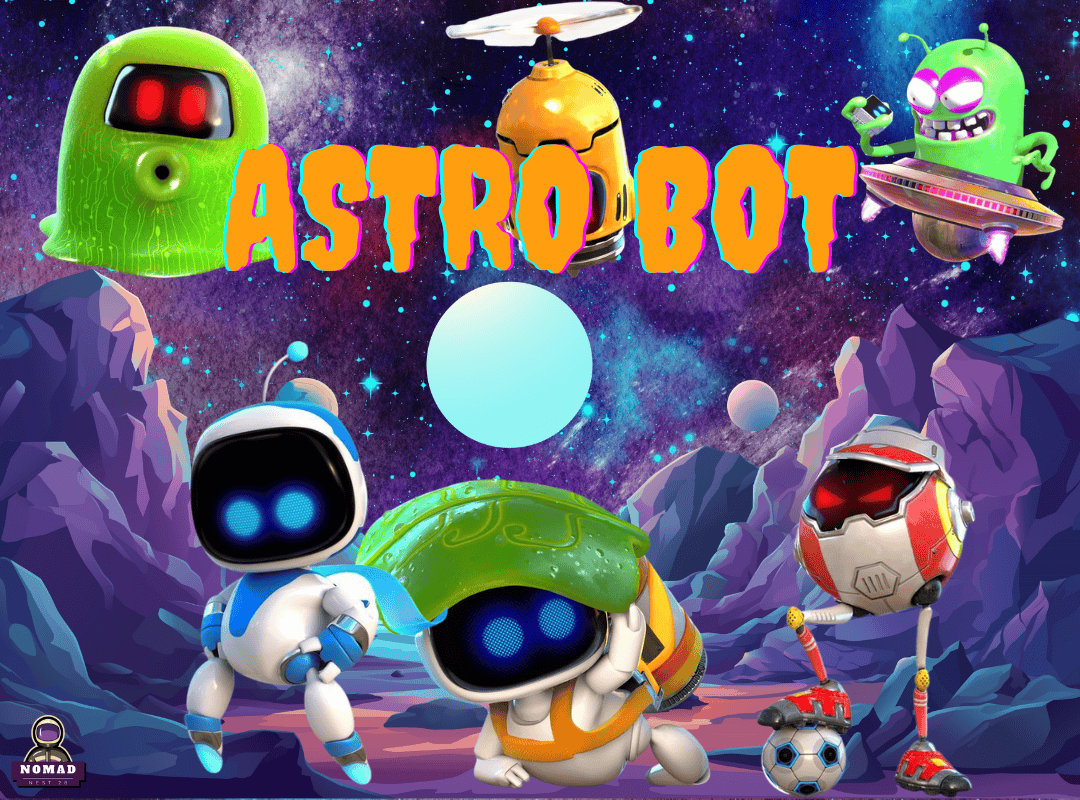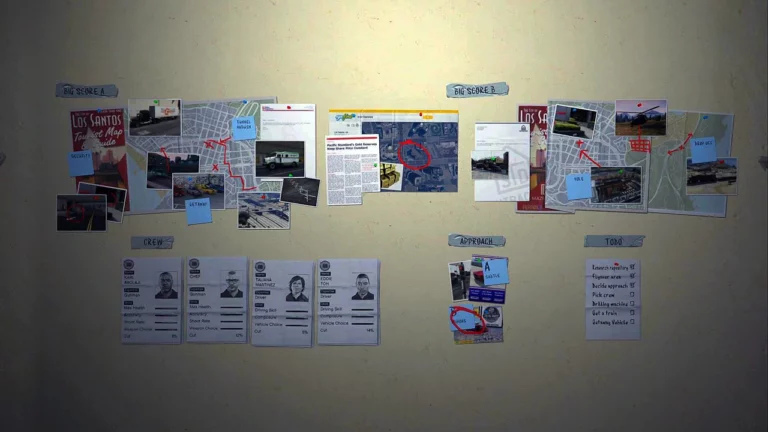Astro Bot PS5 Top Game Recommendations for New PlayStation Owners
Astro Bot is the cheerful robot mascot created by Team ASOBI and published by Sony Interactive Entertainment. The character is best known from two high-profile PlayStation platformers: Astro Bot Rescue Mission, a virtual reality (VR) platformer that launched to showcase PlayStation VR, and Astro’s Playroom, a non-VR 3D platformer built into the PlayStation 5 to demonstrate the DualSense controller and celebrate PlayStation hardware history. Both games center on tight, inventive platforming wrapped in a toy-like aesthetic, serving as demonstrations of how hardware features (such as VR or advanced controller haptics) can be integrated into level and game design.
This article focuses on the gameplay systems, level design philosophy, audiovisual presentation, technical and accessibility considerations, and why Astro Bot matters as a design example for modern platformers.
If you want to play this game, click here.
Core Gameplay Mechanics: Astro Bot
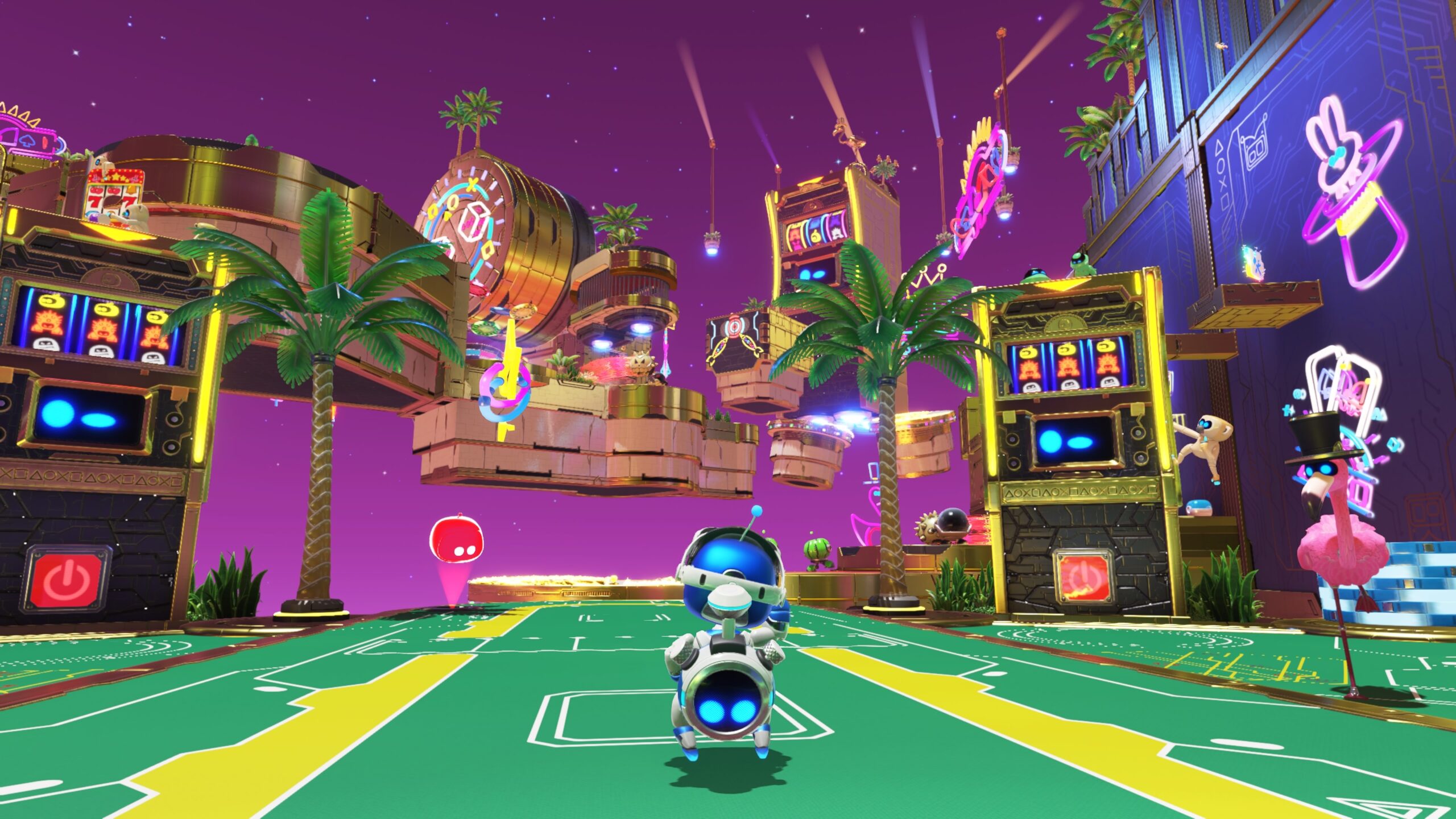
Player Perspective and Interaction
A defining trait of the Astro Bot games is their ability to pair classic 3D platforming with the player’s physical perspective. In the VR title, the player’s head movement and headset view are integral: looking around reveals hidden paths, environmental cues, and off-screen interactions that traditional camera systems would hide. In the non-VR PlayStation 5 title, the DualSense controller performs a parallel role: adaptive triggers, precise haptics, and motion gestures become part of the tactile vocabulary, letting the controller communicate subtle in-game feedback.
Controls remain approachable. Movement and jumping are comfortable and responsive; platforming challenges rarely hinge on frustrating precision but instead emphasize timing, pattern recognition, and spatial awareness. Player input is used not only to move the protagonist but also to manipulate the level or camera perspective, encouraging exploration and curiosity.
Read too
- Why Destruction AllStars Is the Most Explosive Multiplayer Game on PS5
- Marvel’s Wolverine Brings Brutal Action to PlayStation 5 in 2026
- Time-Bending Adventure Crash Bandicoot 4 Explored
- Ratchet & Clank Rift Apart Review Pixar-Level Action
- The Best Xbox Games of 2025 You Need for the Best Experience
- Unmasking Greatnesss The Definitive Spider-Man Experience Remastered
Level Design and Progression Astro Bot
Levels in Astro Bot games are typically compact, densely packed experiences that function like mini dioramas. Each level has a clear theme and set of mechanics introduced early and then cleverly remixed. Designers layer visual puzzles, traversal segments, and short action beats so that players are constantly discovering something new.
Progression is mission-based: the player advances through a series of discrete stages grouped into worlds or themed hubs. Each stage usually contains primary objectives (reach the goal, defeat a boss) plus secondary goals (rescue hidden micro-bots, collect collectibles, find secret routes). This two-tiered objective structure adds replay value and non-linear exploration within short play sessions.
Enemies, Combat, and Boss Encounters
Combat is straightforward and accessible. Common enemy types follow predictable patterns-patrolling bots, projectile throwers, or environmental hazards can be approached with different tactics depending on the level. Player attacks are typically simple (jump stomp, short-range attack, or environment-triggered hazards), reinforcing platforming fluidity rather than deep combat complexity.
Boss fights act as level finales and are often built around exploiting a single core weakness or pattern, sometimes requiring the player to use their viewpoint (especially in VR) to discover weak points. Boss design tends toward spectacle and teachable patterns rather than punishing difficulty spikes.
Design, Art, and Sound Astro Bot
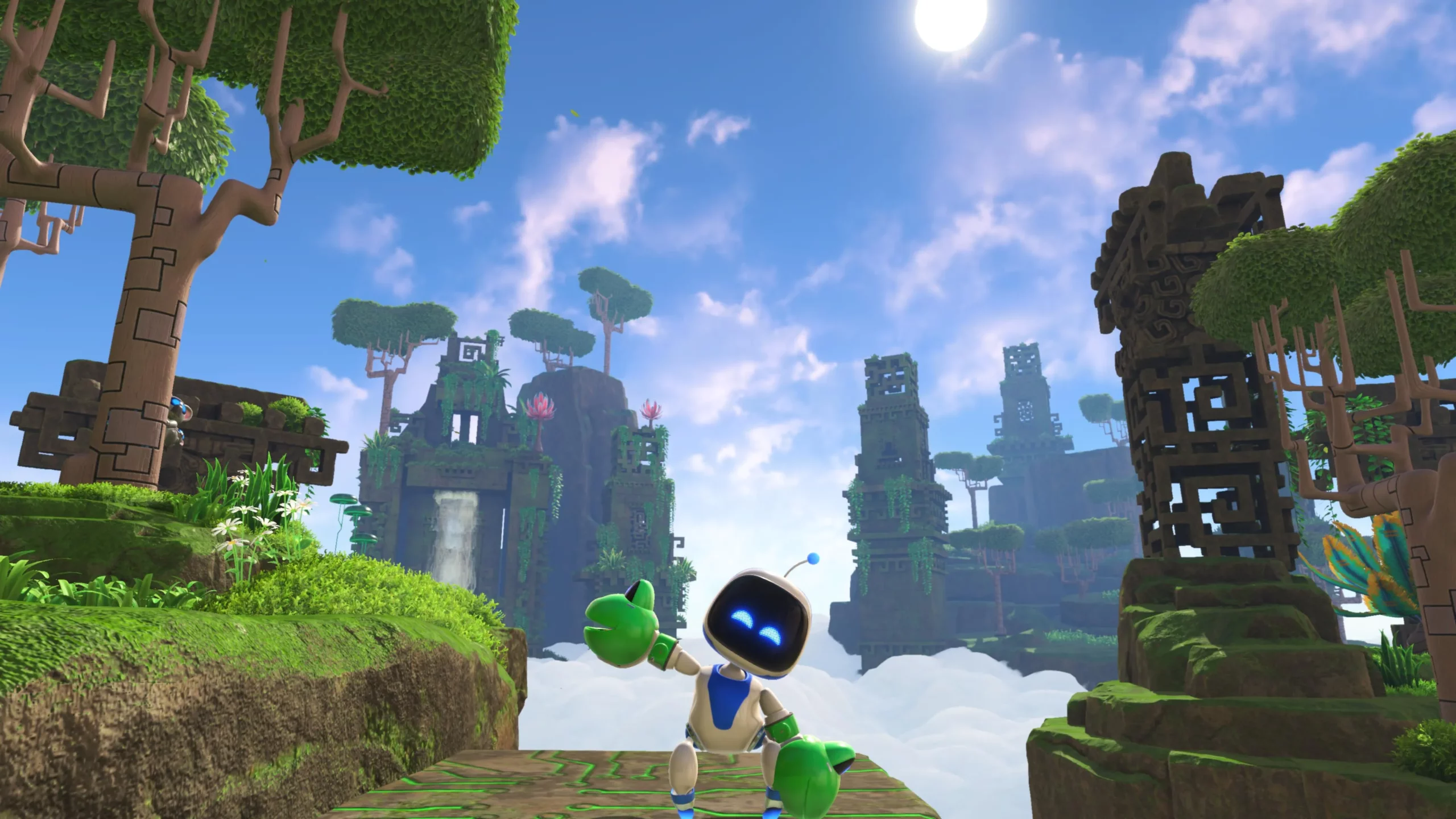
Visual Style and World Building
Astro Bot’s visual language is intentionally toy-like and exuberant. Environments feel handcrafted, as if the player is moving through a kid’s bedroom diorama or a compact mechanical playground. Textures are clean, color palettes are vibrant, and particle effects and camera motion sell a sense of scale that’s bigger than the character himself.
The level geometry often hides secrets in plain sight: gaps between set pieces, cracks in the backdrop, or off-angle camera vistas that reward curiosity. This encourages players to look around and experiment, especially in VR, where physical head movement is a natural part of play.
Audio Design and Music
Audio plays a dual role: functional feedback and emotional tone. Short musical motifs and rhythmic cues accompany jumps, collectibles, and enemy defeats. Sound effects are engineered to respond to player input-landing impacts, springy jumps, and haptic-synced audio in DualSense implementations increase immersion. In VR, spatialized audio helps localize off-screen items and threats, reinforcing the player’s natural tendency to look toward sound sources.
Technical and Accessibility Considerations Astro Bot
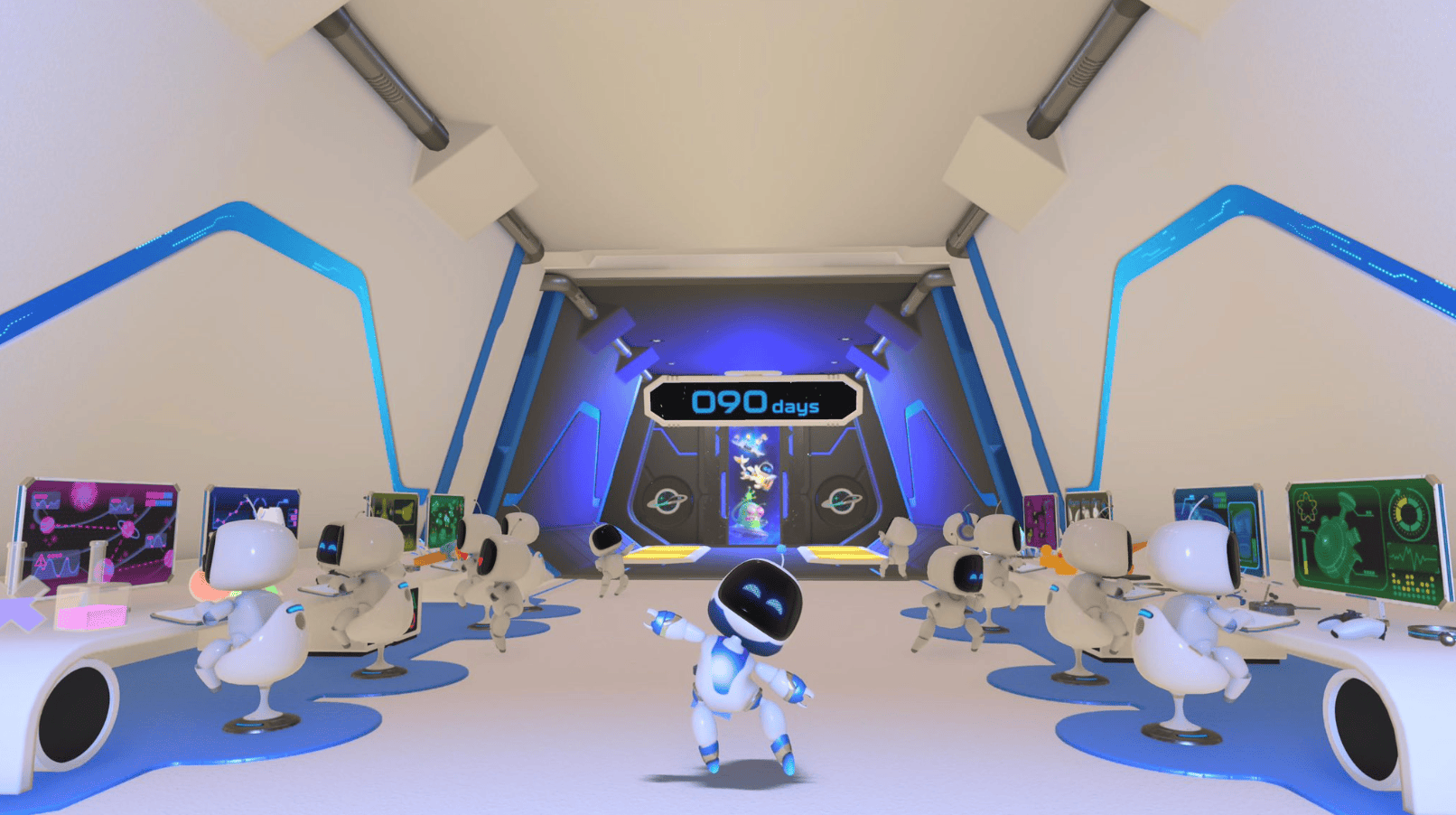
Performance and Platform Integration
Astro Bot games are tightly optimized to meet the constraints and opportunities of their platforms. The VR entry prioritizes framerate stability and low-latency head tracking to reduce motion sickness.
Developers also use camera tricks and level geometry to hide pop-in and manage draw distance without breaking player immersion. The compact level design helps keep the number of active objects manageable, enabling richer detail in smaller play spaces.
Comfort, Motion, and Accessibility Options
Comfort is a clear priority, particularly in VR. Designers provide multiple comfort aids: vignette options, snap-turn vs. smooth rotation choices, and camera anchors that limit forced movement. The movement model favors short, segmented traversal that reduces prolonged camera acceleration-this lowers the likelihood of nausea.
Accessibility options include remappable controls, difficulty-friendly checkpoints, and generous hitboxes for platforming elements.
Replayability, Monetization, and Community Astro Bot
Replay Value and Collectibles
Replayability hinges on secrets, collectibles, and short-form design. Hidden bots, alternate paths, and time-based challenges encourage revisits. Because each stage is concise, replaying to find everything is a low-friction commitment that rewards observation and experimentation.
Community and Cultural Impact
Astro Bot’s design has influenced how developers think about integrating hardware features into gameplay rather than treating them as mere appendages.
Practical Tips for Players
- Look everywhere: the games reward head turns, off-angle glances, and camera manipulation-especially useful in VR.
- Take your time with new mechanics: designers introduce one idea and then expand it; mastering the early segment often reveals how to approach later challenges.
- Use checkpoints: take note of where saves occur so you can attempt optional routes without losing progress.
- For comfort in VR: keep sessions short at first, enable comfort options, and take breaks if movement starts to feel uneasy.
Why Astro Bot Matters
Astro Bot is not just a charming mascot platformer; it is a study in integrating hardware and design to produce play that feels native to its platform. Whether guiding players through tiny dioramas in VR or crafting tactile, haptic-rich playgrounds on a next-gen console, the Astro Bot games demonstrate that clever level design, clear visual language, and a respect for player comfort can elevate what may otherwise be a straightforward genre into something memorable and instructive for designers.
Conclusion
At its core, Astro Bot is an exercise in joyful, approachable platforming that amplifies its strengths through platform-specific features. The games combine classic design sensibilities-tight movement, clear objectives, and layered level design-with modern hardware affordances to create experiences that are both entertaining for players and instructive for game designers. Whether you encounter Astro Bot in a VR headset or waving through the haptics of a DualSens

